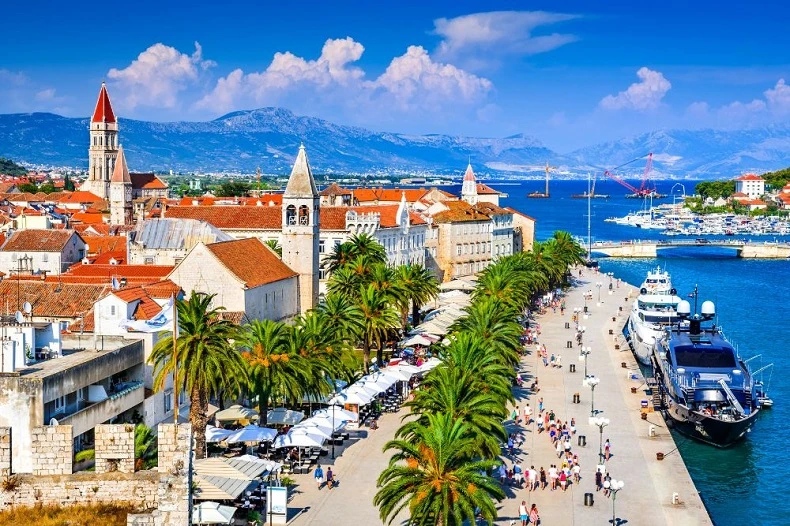
Croatian urban locations, especially the biggest cities in Croatia, are the key to understanding the way this country ticks and the identity of its residents. From the world’s tiniest town to ancient cities settled in ancient times, all the way to modern centers bursting with vitality, these cities offer cultural and culinary delicacies.
In Croatia, you can spend several hours driving and see the varied landscapes, climatic conditions, and cultural traditions of nearly the entire continent.
You can also visit its urban areas, which range from the bright Mediterranean south to the lush Central European north, all of which are equally fascinating and eclectic.
Croatia is the 127th largest country in the world, with an area of 21,851 square miles. Major rivers including the Sava, Danube, and Kupa pass through Croatia’s steep northern region and its flat southeastern plains. Low mountains and highlands covered in forest can be found in the center and southern regions.
Karst terrain can be found throughout most of the nation, especially in the Dinaric Alps. Croatia is a much-urbanized country with several cities and towns, the largest of which is Zagreb, which also serves as the republic’s capital. Below mentioned are the Biggest Cities In Croatia.
Zagreb: The Heartbeat of Croatia
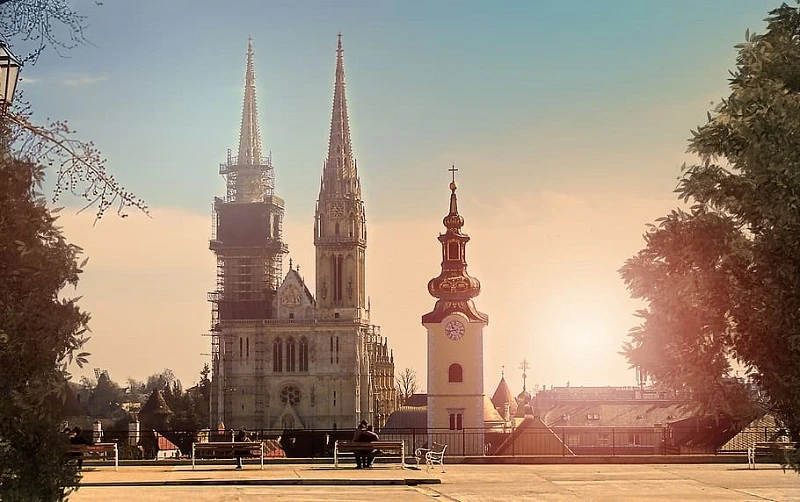
Zagreb is one of the biggest cities in Croatia and it is also a capital city, located in the country’s northwest along the Sava River. It has a population of 792,875 and is located at an elevation of around 400 feet above sea level.
Its long history began during the Roman era in 1094 AD when King Ladislaus established a diocese called Kaptol with a nearby town named Gradec after his return from a campaign against Croatia. In 1851, Ban Josip combined the two towns of Kaptol and Gradec.
Without a definite dry season, the city has an oceanic climate with four different seasons: summer, autumn, winter, and spring. The average temperature changes from 1 degrees Celsius in the winter to 22 degrees Celsius in the summer.
Snowballs are abundant in the winter, and rain and fog are typical in the autumn. 17 city districts and 218 local committees make up the local administration in Zagreb.
It is a hub for international trade and commerce, home to businesses involved in the manufacture of power, textiles, chemicals, and pharmaceuticals, as well as food and beverages.
It is the heart of five major Croatian highways that typically began or finished in Zagreb and features an integrated transportation network of roads, bridges, and highways.
It has many museums, including archaeological, gallery, and technical ones, that showcase the pre-civilization culture that existed in Zagreb, Croatia, and the rest of Europe.
Split: A UNESCO World Heritage marvel
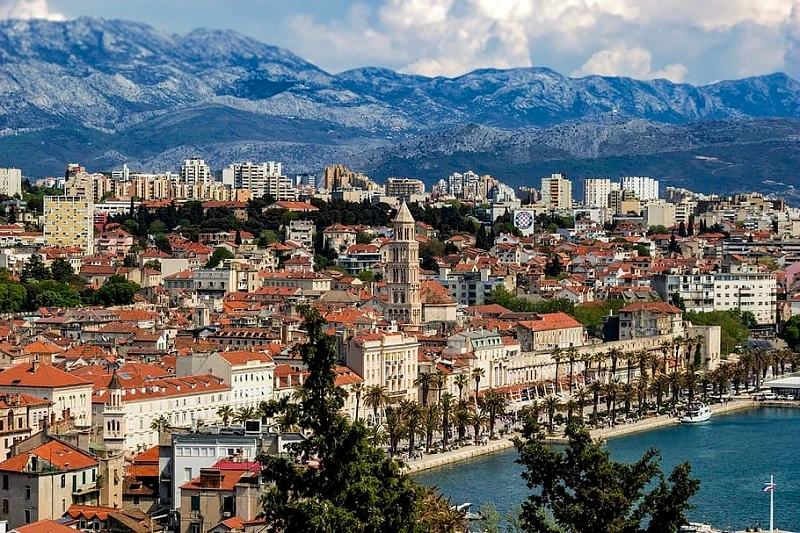
The split city is the biggest in the Dalmatia area and ranks second among Croatia’s main cities. Its area includes nearby seaside communities, making the city a popular beach resort destination for both locals and celebrities from across the world.
It is one of Croatia’s oldest cities, having been established as an Aspalathus-founded Greek colony in the fourth century. It was a Byzantine city until 650 CE when Venice seized it and turned it into a Venetian city.
It has Mediterranean and humid subtropical climates. The winters are chilly, and the summers are hot and moderately dry.
Split, one of the biggest cities in Croatia, experiences an average yearly rainfall of 820 mm or more. The hottest month is July, with highs of up to 30 degrees Celsius. Esteemed as a cultural epicenter of Croatia, this UNESCO World Heritage Site boasts the University of Split, 24 elementary schools, and 23 high schools.
It is also a significant hub for transportation in the Dalmatian region, having well-defined motorways and road systems that allow for quick and effective movement within and outside of the city.
Rijeka: Gateway to the Islands
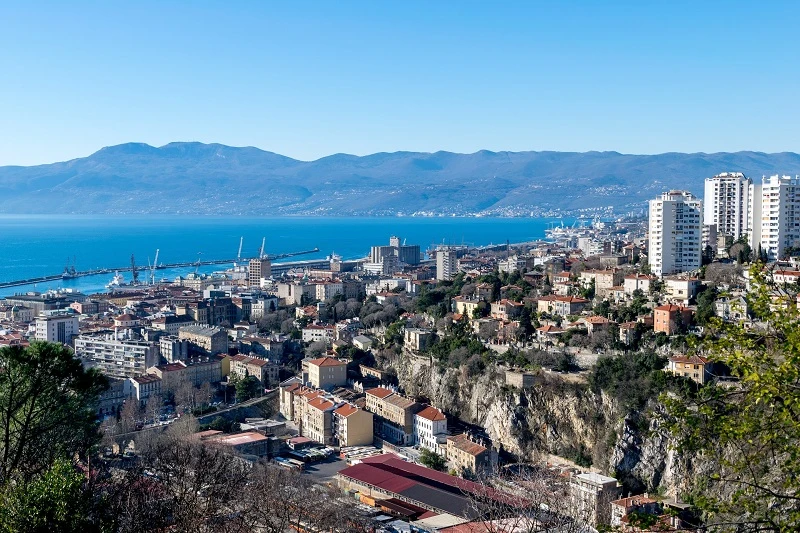
Rijeka, one of the biggest cities in Croatia, is a prominent seaport on Kvarner Bay. The city was fiercely contested by Italians, Hungarians, and Croatians due to its location as a seaport. It is a significant maritime hub, with shipbuilding and maritime transportation constituting the core of its economy.
Croatians make up the majority of the population, with tiny populations of Bosniaks, Serbs, and Italians. The majority of people use the Venetian dialect fiumano when speaking Croatian.
It has a humid subtropical climate with warm, comfortable summers, seldom any snowfall in the winter, temperatures between 0 and 30 degrees Celsius, and a lot of rain.
The torpedo factory, the sanctuary of Our Lady of Treat, and the old gate are among the city’s top attractions.
Dubrovnik: A view like no other
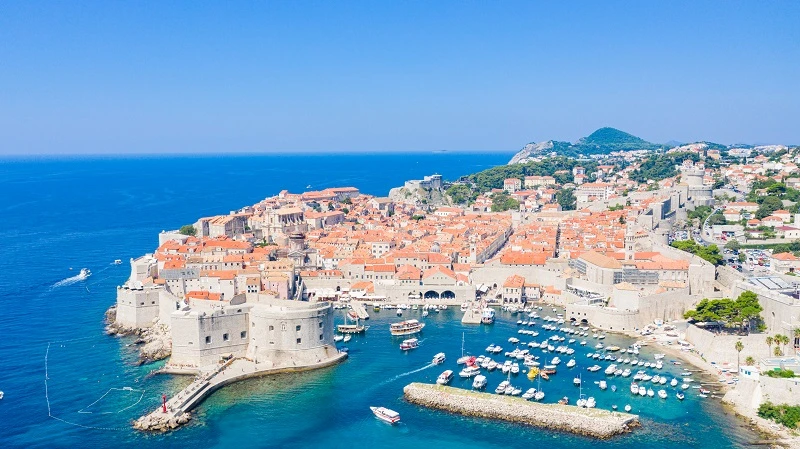
Dubrovnik, one of the biggest cities in Croatia, is the most popular coastal city in southern Croatia, and lots of tourists come here to swim in the warm, clear waters.
Massive limestone walls constructed in the 15th century enclose the picturesque Old Town of Dubrovnik. You should go along the walls since they provide breathtaking views of both the city and the Adriatic Sea.
Visit St. John’s Fortress, which is a part of the city walls and has a Maritime Museum on the upper floor and a tiny aquarium on the ground floor. Due to a city order made after a fire and earthquake in the 17th century, all the houses in the Old Town have the same floor layout, which makes it remarkable.
Both a visit to the Baroque City Cathedral and taking a walking tour are worthwhile. Numerous works of art and ceremonial objects from the 11th to the 18th centuries can be found.
The Trsteno Arboretum, a lovely park on a hill near the sea, is the perfect place to go if you’re craving nature after a busy couple of sightseeing days.
The landmark from the fifteenth century contains stunning sculptures, fountains, and an aqueduct that irrigates the park. A pair of 500-year-old oriental plane trees is the attraction. Black risotto, which is cooked with cuttlefish, black ink, mussels, and clams, is a classic dish from Dubrovnik.
Zadar: Roman and Venetian Heritage
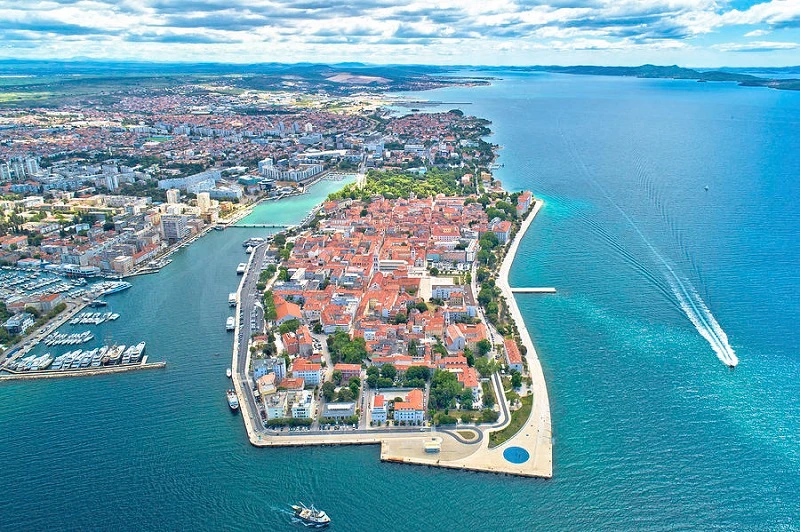
Zadar, one of the biggest cities in Croatia, is a coastal city renowned for its Roman and Venetian remains. Wear sensible shoes because the Old Town’s cobblestone streets are beautiful. Mediaeval and Roman churches can be found throughout the winding lanes.
A portion of the church floor has been taken out to reveal the original stonework beneath the ninth-century Church of St. Donatus, which stands on the foundations of ancient Roman ruins.
Between the first and third centuries, Roman Forum stones were removed and utilized to construct the church. The Forum is worth seeing at night because it is illuminated. Paving stones, a Corinthian column, and remnants of building foundations can all be found at the Forum.
Zadar Cathedral is a blend of Byzantine and Romanesque architecture from the ninth century. The Bell Tower can be climbed for breathtaking city views. The seashore in Zadar is home to two attractions.
The Sea Organ is a massive sea organ that the waves play, and nearby is the Greeting to the Sun, a glass structure with 300 multi-layered glass panels that glow at night.
Kolovare Beach is the primary city beach. It’s a great place to spend the day because the water is extremely clean and there are a variety of restaurants close by.
Osijek: A Gem Among the Biggest Cities in Croatia
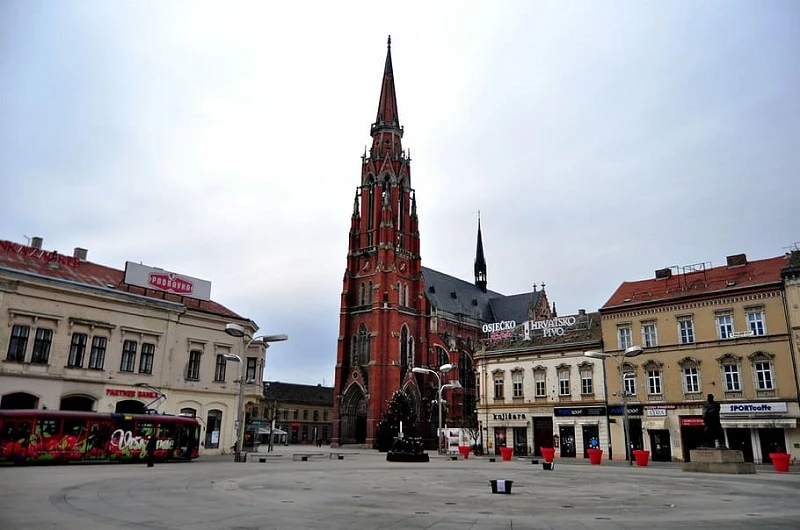
The fourth-largest city in Croatia, Osijek is situated in eastern Croatia on the Drava River’s right bank. The Trg Ante Starcevica square, which has stores and cafes, is the focal point of life in Osijek. The 94-meter-tall (308-foot) Church of St. Peter and St. Paul is situated next to the square.
It contains some lovely stained-glass windows and was constructed in a Neo-Gothic style. The 1687-built Habsburg Star Fort and the Old Town’s jewel box of Baroque structures are both notable landmarks. The fort’s interior has been transformed into the city’s best nightlife district.
Along with eateries, this area has pubs and clubs. Find restaurants and bars along the seafront while you stroll beside the Drava River to unwind. Summer is a good time to visit Copacabana River Beach. Public swimming pools are located directly adjacent to the beach, and you can swim and sunbathe there.
In Osijek, one of the biggest cities in Croatia, you’ll find the nation’s largest zoo, the Osijek Zoo & Aquarium, just across the bridge. The city boasts numerous natural areas offering escapes from urban hustle. Of its 17 parks, Kapacki Park stands out as the largest wetland in Europe.
Try some of the regional specialties including slanina, Cullen (sausage), river fish, and fis paprikas. Trg Papelvana Pavla 11 23000 is where you may find the Church of St. Peter & St. Paul.
The Role of the Biggest Cities in Croatia’s Tapestry
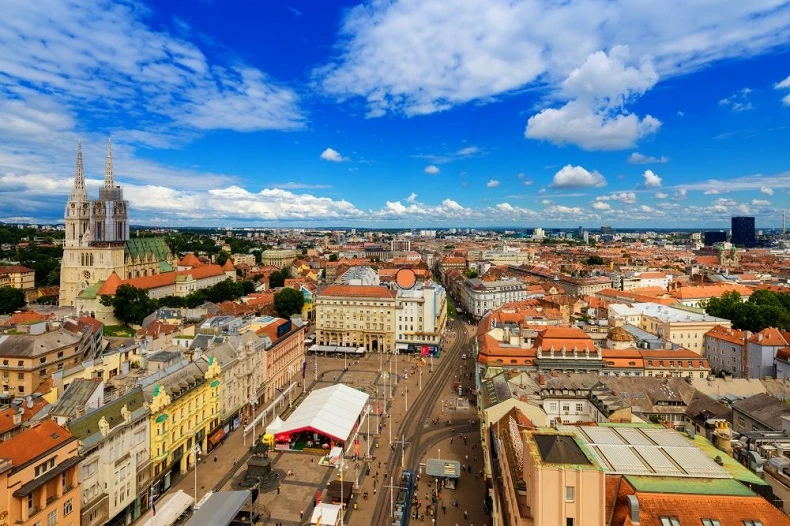
Tracing Croatia’s Rich Cultural Heritage
Croatia is a cultural treasure trove that has mesmerised tourists for centuries. It lies tucked between the azure Adriatic Sea and the craggy highlands of Central Europe.
Croatian culture offers a fascinating fusion of elements that is a joy to discover, from its magnificent architectural design and traditional music to its delectable cuisine and time-honored rituals.
The cultural history of Croatia is as varied as its topography and is characterized by a long history of several civilizations leaving their marks on the region. All have contributed to the cultural mix that characterizes contemporary Croatia, including the Illyrians, Romans, Byzantines, Venetians, Ottomans, and Habsburgs.
Language, Architecture, and Traditions: The Pillars of Croatian Identity
Because of the fusion of Western and Eastern cultures, Croatia has developed a distinct identity that is reflected in its language, traditions, arts, and architecture.
Croatian belongs to the South Slavic language family, which also includes Serbian, Bosnian, and Montenegrin. Croatians take great pride in their language, which has endured thanks to a long literary tradition.
Croatian literature has greatly benefited from the contributions of renowned authors like Dubravka Ugrei and Marko Maruli, who is regarded as the founder of the Croatian Renaissance.
With a variety of architectural styles that reflect various historical eras, Croatian architecture serves as a historical record of the nation.
The Roman Arena, one of the best-preserved amphitheatres in the world, is located in the ancient city of Pula, while Split’s Diocletian’s Palace is an outstanding example of Roman architecture.
Dubrovnik, one of the biggest cities in Croatia and a UNESCO World Heritage Site, is a walled city showcasing Gothic, Renaissance, and Baroque influences.
Music is an important part of Croatian culture, and the country’s traditional music is as diverse as the country itself. Croatian music reflects its people’s emotions, from the soulful Klapa music of Dalmatia to the vivacious tamburica music of Slavonia.
The revered and enthusiastically sung “Lijepa Naa” serves as the country’s anthem. Traditional Croatian dances like the Kolo and the Lino provide festivals and festivities with a lively rhythm.
The variety of flavors in Croatian food is endless. Regional differences include a preference for Mediterranean influences in coastal areas (think olive oil, shellfish, and wine) and a preference for substantial Central European cuisine in the interior (think meat stews and strudels).
Istrian truffles, Pag cheese, Dalmatian prut (dry-cured ham), and the sweet treat rota are just a few examples of Croatia’s delectable cuisine.
Numerous cultural events, including festivals honoring music, film, dance, and other genres, are held in Croatia. Among the most well-known are the Dubrovnik Summer Festival and the Pula Film Festival.
On the island of Hvar, traditional occasions like the silent Za Krien procession and the knightly tournament known as Sinjska Alka continue to be fervently celebrated.
A fascinating trip through time, where the past and present peacefully converge, is what it means to experience Croatian culture.
The beautifully woven cultural tapestry of Croatia, which includes elements of history, language, architecture, music, cuisine, and traditions, has a particular allure that never fails to enchant those who seek to study it.
Useful Resources
Croatia National Tourist Board – https://croatia.hr/
UNESCO World Heritage List – https://whc.unesco.org/
The World Atlas – https://www.worldatlas.com/
Visit Croatia – https://www.visit-croatia.co.uk/
Conclusion
To conclude, the above-mentioned are the biggest cities in Croatia. Croatia contains roughly 128 cities and settlements, with population sizes varying. In Croatia, urban areas are home to more than half of the population.
Among other significant Croatian cities are Velika Gorica, Slavonski Brod, Pula, Karlovac, and Sisak. Cities serve a variety of purposes, including those related to education, industry, commerce, transportation, and culture.
The Republic’s government has set aside the important historical and archaeological sites that may be found in different cities.
